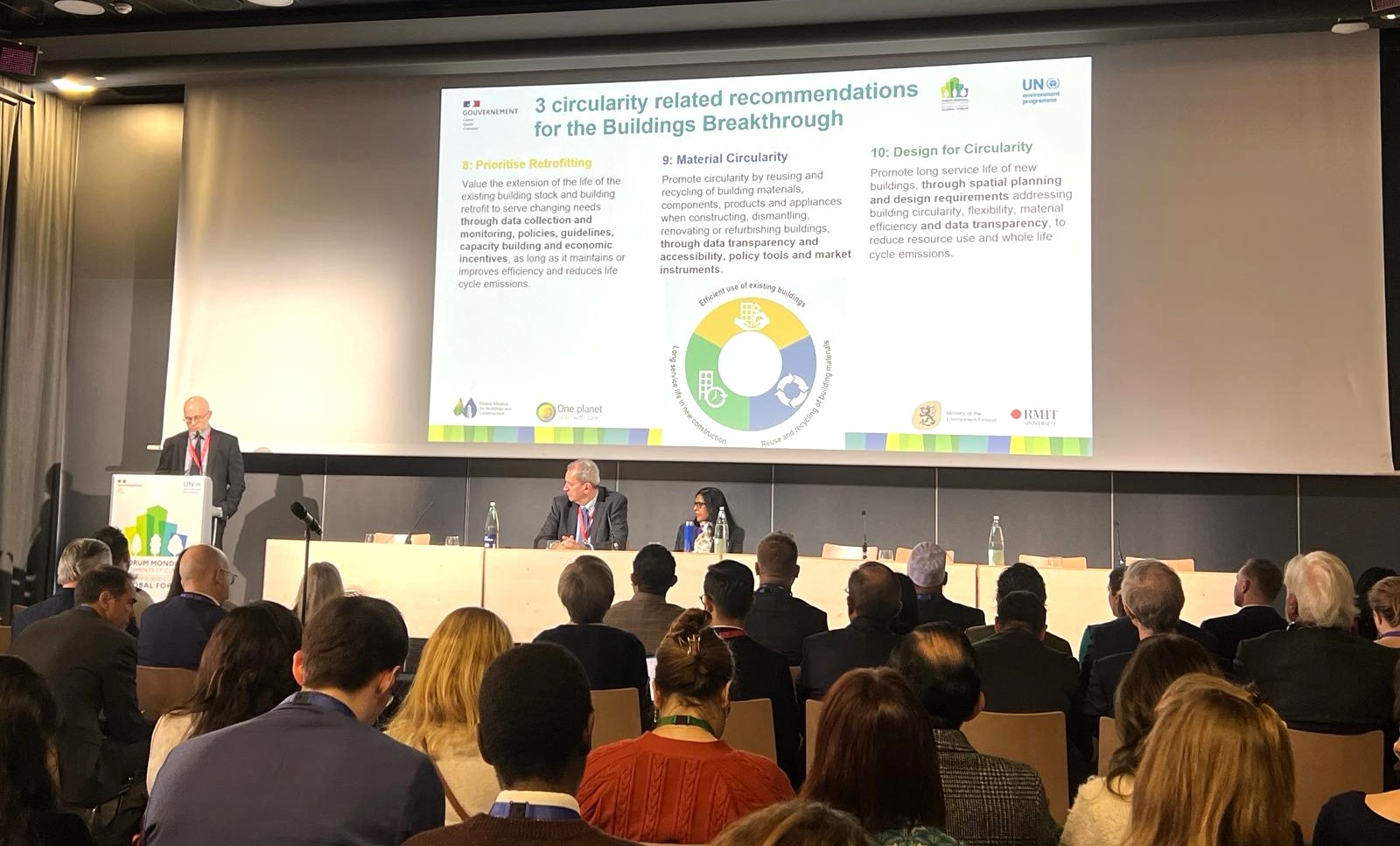Using Consumer Information to mitigate Climate Impact in the Buildings Sector

Top five insights:
- The buildings and construction sector has a high climate impact and energy demand and electricity use are increasing
- There is great potential for energy and emission savings in the construction of new buildings and retrofitting of existing buildings
- Demand-side action and consumer information tools have an important role to play in mitigating the climate impact of the buildings and construction sector
- Greater market penetration and harmonization of consumer information tools are key
- Energy efficiency certificates are a positive example of how consumer information tools can influence behaviour and drive change in the market
The Climate Impact of the Buildings and Construction Sector
The buildings and construction sector heavily contributes to climate change. Greenhouse gas emissions from buildings equalled 9.2 CO2-eq in 2010, representing 19% of global emissions. Including construction, the sector accounts for 39% of global energy and process-related CO2 emissions. A significant share of emissions is embodied carbon, defined as the energy necessary to produce building materials. Despite increasing efforts to improve energy efficiency and commitments to tackle climate change, the sector’s emissions have doubled over the period of 1970 and 2010. Much of the increase can be associated to rising energy and electricity demands as well as growth in floor area and population. For example, global electricity demand from appliances grew by 18% between 2010 and 2017. Despite decarbonization pledges, the Intergovernmental Panel on Climate Change (IPCC) expects global energy use from buildings to double or triple between 2010 and 2050.
Mitigation of Climate Impact
Despite those predictions, there is scope for a different future. The buildings and construction sector offers significant energy saving and climate mitigation potential. By employing technological options and design practices already available today, 50-90% of energy use in new buildings and 50-70% in existing buildings could be avoided, which highlights a window of opportunity in the low carbon development of the sector. However, it is important to notice that such improvements require strong political will and large-scale financial investments towards low-carbon practices and products. First, while energy cost savings can offset higher costs of improved building standards, such as low-energy buildings or passive energy homes, the payback times can be long and thus less attractive for buyers and investors.
Second, although technology plays a key role in mitigation efforts of the sector, it needs to be supported by demand-side changes with greater emphasis placed on the need for behavioural changes. Such behaviour changes are particularly urgent among the affluent population groups, whose per capita emissions are still growing rapidly.
Consumer Information Tools in the Buildings and Construction Sector
Consumer information tools can play an important role in supporting demand-side actions. They can inform decision making related to a) the energy efficiency of measures and the contractor of choice, b) the characteristics of materials used for construction, and c) the outcome in terms of the building’s future energy requirements. Each decision has potential implications for the supply chain and the life-cycle assessment of climate and other environmental impacts of a building.
With increasing awareness of climate impacts and associated costs, several certification and labelling schemes have been created to support the construction of low-energy buildings and increase pressure on the sector to improve energy efficiency.
However, market penetration of these schemes remains relatively low and a lack of harmonization among national-level initiatives hinders comparability of different existing standards. A key challenge is to clearly define system boundaries for underlying lifecycle analyses that aim to determine the environmental impact of buildings. A multi-stakeholder effort is therefore required to improve the uptake and the harmonization of methodologies and information tools.
Energy efficiency certifications
An example of an effective consumer information tool in the buildings and construction sector are energy efficiency certifications, particularly in the EU, where they have been mandated by law. This has helped reach scale and make them more relevant for consumers. Energy performance certificates provide information that is directly related to costs as inefficient buildings will require more energy. It is therefore an important consideration for consumers when buying or renting a building. Various studies have shown that a higher energy efficiency rating has the potential to increase a property’s market value. It is thus relevant for both the market and the consumers, making behaviour change more likely as it can be associated with a personal benefit.
This example shows that legislation can support more widespread adoption of certification schemes, while putting greater emphasis on the financial implications can make labels more relevant for consumers.
Infographics
To learn more about the importance of consumer information tools in buildings and construction, download our infographic!
The Consumer Information programme has prepared six infographics which summarise some of the key findings of the report “Consumer Information Tools and Climate Change – Facilitating low-carbon choices in Tourism, Buildings and Food Systems” related to different topics. Share these infographics to promote the findings of the report and help us spread the word!
The Report
The report is an output of the Consumer Information programme of the One Planet network and was developed through a collaborative effort among the Consumer Information, Sustainable Buildings & Constructions, Sustainable Food Systems and Sustainable Tourism programmes. The effort was led by the United Nations Environment Programme.
The report details how the use of consumer information tools can support greenhouse gas emission reductions in three sectors – Tourism, Buildings and Food. It serves as a guidance for policy makers and business leaders.
You can download the full version of the report here.

